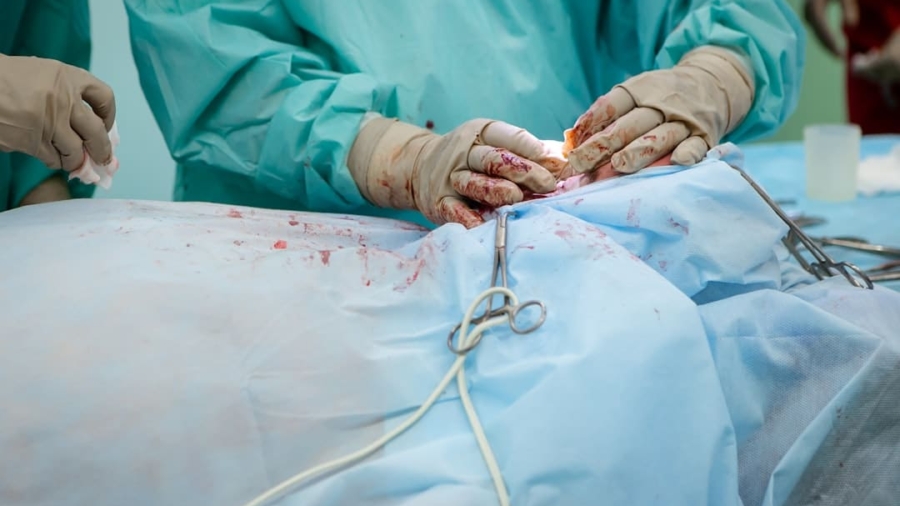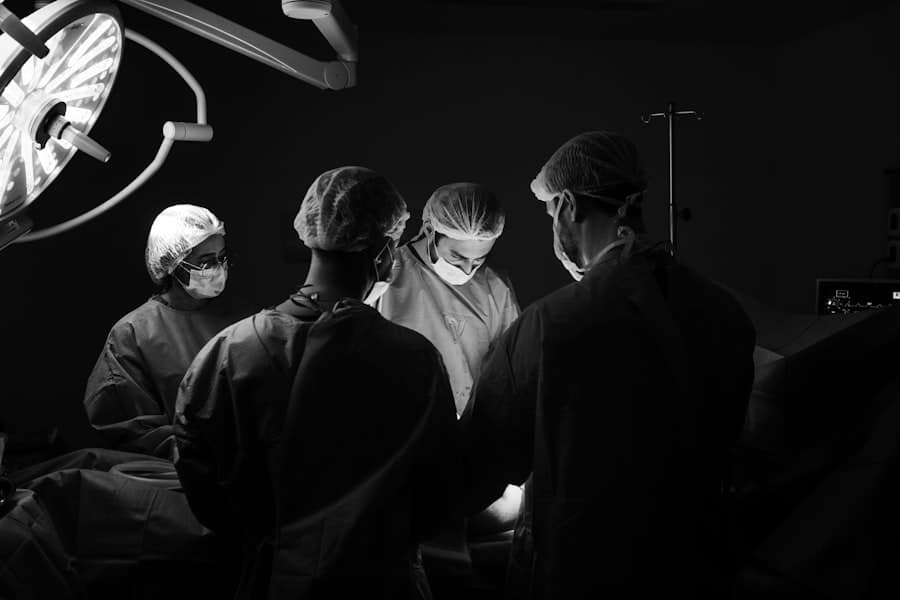The advent of self-organizing microbots marks a significant milestone in the field of surgical technology. These tiny robots, often measuring just a few millimeters in size, are engineered to perform complex tasks autonomously or in coordination with one another. Their development has been fueled by advancements in materials science, robotics, and artificial intelligence, allowing for unprecedented precision and adaptability in surgical procedures.
Researchers have drawn inspiration from natural systems, such as swarms of insects or schools of fish, to create microbots that can communicate and collaborate effectively. This biomimetic approach has led to the emergence of microbots capable of navigating intricate biological environments, such as the human body, with remarkable efficiency. The rise of self-organizing microbots is also a response to the growing demand for less invasive surgical techniques.
Traditional surgical methods often involve large incisions and extended recovery times, which can lead to complications and increased healthcare costs. In contrast, self-organizing microbots can be deployed through small openings, minimizing tissue damage and promoting faster healing. As these technologies continue to evolve, they promise to transform the landscape of surgery, offering new possibilities for treating a wide range of medical conditions with enhanced safety and efficacy.
Key Takeaways
- Self-organizing microbots are revolutionizing minimally invasive surgery by enabling precise and targeted interventions.
- These microbots play a crucial role in precision medicine by delivering drugs and performing procedures at a cellular level.
- Advantages of self-organizing microbots include reduced scarring, faster recovery, and improved accuracy, while limitations include potential technical challenges and ethical considerations.
- The future of self-organizing microbots in surgical innovation holds promise for further advancements in precision and effectiveness.
- Collaborative efforts are essential in advancing self-organizing microbots for surgical applications, with potential to significantly impact the healthcare industry.
How Self-Organizing Microbots are Revolutionizing Minimally Invasive Surgery
Self-organizing microbots are at the forefront of revolutionizing minimally invasive surgery (MIS), a field that has gained traction due to its numerous benefits over conventional surgical approaches. By utilizing these microbots, surgeons can perform intricate procedures with minimal disruption to surrounding tissues. For instance, microbots can be programmed to navigate through the bloodstream or other bodily fluids, delivering targeted therapies directly to affected areas without the need for extensive incisions.
This capability not only reduces patient trauma but also significantly lowers the risk of infection and other postoperative complications. Moreover, the ability of self-organizing microbots to work collaboratively enhances their effectiveness in surgical settings. When deployed in groups, these microbots can coordinate their actions to achieve complex tasks that would be challenging for a single robot.
For example, they can collectively manipulate tissue or deliver multiple therapeutic agents simultaneously, optimizing treatment outcomes. This level of coordination is particularly beneficial in delicate procedures such as tumor removal or vascular repairs, where precision is paramount. As research progresses, the integration of real-time imaging and feedback mechanisms will further enhance the capabilities of these microbots, allowing for even greater accuracy during surgical interventions.
The Role of Self-Organizing Microbots in Precision Medicine
Precision medicine aims to tailor medical treatment to individual characteristics, needs, and preferences. Self-organizing microbots play a pivotal role in this paradigm by enabling highly personalized therapeutic approaches. These microbots can be designed to respond to specific biomarkers or environmental cues within the body, allowing them to deliver targeted therapies based on a patient’s unique biological profile.
For instance, in cancer treatment, microbots could be engineered to recognize tumor-specific antigens and release chemotherapeutic agents directly at the tumor site, minimizing systemic side effects and enhancing treatment efficacy. Additionally, self-organizing microbots can facilitate real-time monitoring of a patient’s condition. Equipped with sensors and communication capabilities, these microbots can collect data on various physiological parameters and transmit this information to healthcare providers.
This continuous monitoring allows for timely adjustments to treatment plans based on the patient’s response, further exemplifying the principles of precision medicine. As researchers continue to explore the potential applications of self-organizing microbots in this field, the integration of artificial intelligence and machine learning will likely enhance their ability to analyze complex data sets and make informed decisions regarding patient care.
Advantages and Limitations of Self-Organizing Microbots in Surgical Procedures
The advantages of self-organizing microbots in surgical procedures are manifold. One of the most significant benefits is their ability to perform tasks with a high degree of precision and control.
This precision not only improves surgical outcomes but also reduces recovery times and minimizes the risk of complications associated with larger incisions. However, despite their promising potential, self-organizing microbots also face several limitations that must be addressed before they can be widely adopted in clinical practice. One major challenge is the development of reliable communication systems that enable effective coordination among multiple microbots.
Ensuring that these robots can communicate seamlessly within the complex environment of the human body is crucial for their successful operation. Additionally, there are concerns regarding biocompatibility and long-term safety; researchers must ensure that these microbots do not elicit adverse immune responses or cause unintended damage to healthy tissues.
The Future of Self-Organizing Microbots in Surgical Innovation
Looking ahead, the future of self-organizing microbots in surgical innovation appears promising. As technology continues to advance, we can expect significant improvements in their design and functionality. Innovations in materials science may lead to the development of more flexible and biocompatible materials that enhance the performance of these microbots within the human body.
Furthermore, advancements in artificial intelligence will likely enable more sophisticated algorithms for autonomous decision-making, allowing microbots to adapt their behavior based on real-time feedback from their environment. The integration of self-organizing microbots into surgical workflows could also pave the way for entirely new surgical paradigms. For instance, hybrid surgical systems that combine human expertise with robotic precision may emerge, allowing surgeons to leverage the strengths of both approaches.
This collaboration could lead to enhanced outcomes in complex surgeries where human intuition and robotic accuracy are both essential. As research continues to unfold, we may witness a shift towards fully automated surgical procedures where self-organizing microbots take on an increasingly central role.
Ethical Considerations Surrounding the Use of Self-Organizing Microbots in Surgery
The introduction of self-organizing microbots into surgical practice raises several ethical considerations that warrant careful examination. One primary concern is patient consent; as these technologies become more integrated into medical procedures, it is essential that patients are fully informed about how these microbots will be used during their treatment. Transparency regarding potential risks and benefits is crucial for maintaining trust between patients and healthcare providers.
Another ethical consideration involves accountability in the event of adverse outcomes related to the use of self-organizing microbots. Determining liability when a robotic system malfunctions or makes an erroneous decision poses significant challenges. Establishing clear guidelines for accountability will be essential as these technologies become more prevalent in clinical settings.
Additionally, there are broader societal implications related to access and equity; ensuring that all patients have access to advanced robotic surgical technologies will be critical in preventing disparities in healthcare outcomes.
Collaborative Efforts in Advancing Self-Organizing Microbots for Surgical Applications
The advancement of self-organizing microbots for surgical applications relies heavily on collaborative efforts across various disciplines. Researchers from fields such as robotics, materials science, biology, and medicine must work together to address the multifaceted challenges associated with developing these technologies. Interdisciplinary collaborations can foster innovation by combining diverse expertise and perspectives, ultimately leading to more effective solutions.
Moreover, partnerships between academic institutions and industry stakeholders are vital for translating research findings into practical applications. By collaborating with medical device manufacturers and healthcare providers, researchers can ensure that self-organizing microbots are designed with clinical needs in mind. These partnerships can also facilitate clinical trials and regulatory approvals, expediting the process of bringing new technologies to market.
As collaboration becomes increasingly integral to technological advancement, fostering an environment that encourages knowledge sharing and cooperation will be essential for realizing the full potential of self-organizing microbots in surgery.
The Impact of Self-Organizing Microbots on the Healthcare Industry
The impact of self-organizing microbots on the healthcare industry is poised to be transformative. By enabling minimally invasive procedures with enhanced precision and efficiency, these technologies have the potential to improve patient outcomes significantly while reducing healthcare costs associated with prolonged hospital stays and postoperative complications. As more healthcare providers adopt these innovative solutions, we may see a shift in surgical practices towards greater reliance on robotic assistance.
Furthermore, self-organizing microbots could play a crucial role in addressing some of the most pressing challenges facing modern medicine today. For instance, their ability to deliver targeted therapies could revolutionize cancer treatment by minimizing side effects associated with traditional chemotherapy regimens. Additionally, as healthcare systems increasingly prioritize personalized medicine approaches, self-organizing microbots will likely become integral tools for tailoring treatments based on individual patient profiles.
In summary, while challenges remain in terms of technology development and ethical considerations, the potential benefits offered by self-organizing microbots are vast. Their integration into surgical practice represents a significant leap forward in medical technology that could redefine how surgeries are performed and how patients experience care within healthcare systems worldwide.
A related article to “How Self-Organizing Microbots Are Advancing Surgery” is “Exploring the Features of the Samsung Galaxy Book Odyssey.” This article discusses the innovative features of the Samsung Galaxy Book Odyssey, a powerful and versatile laptop designed for productivity and creativity. With its high-performance processor and stunning display, the Galaxy Book Odyssey offers a new world of possibilities for users looking to enhance their digital experience. To learn more about this cutting-edge device, check out the article here.
FAQs
What are self-organizing microbots?
Self-organizing microbots are tiny robots that are capable of autonomously organizing themselves into a specific structure or pattern without external control.
How are self-organizing microbots advancing surgery?
Self-organizing microbots are being developed to assist in minimally invasive surgeries by navigating through the body to deliver targeted treatments or perform precise tasks, such as removing tumors or repairing tissue.
What are the potential benefits of using self-organizing microbots in surgery?
Using self-organizing microbots in surgery could potentially reduce the invasiveness of procedures, minimize the risk of complications, and improve the precision and effectiveness of treatments.
What are some challenges associated with the use of self-organizing microbots in surgery?
Challenges associated with the use of self-organizing microbots in surgery include ensuring the safety and reliability of the technology, as well as addressing ethical and regulatory considerations.
What are some current developments in the field of self-organizing microbots for surgery?
Researchers are currently exploring various designs and control mechanisms for self-organizing microbots, as well as investigating their potential applications in different surgical procedures.



